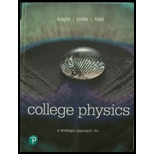
Concept explainers
When you voice the vowel sound in “hat,” you narrow the opening where your throat opens into the cavity of your mouth so that your vocal tract appears as two connected tubes. The first is in your throat, closed at the vocal cords and open at the back of the mouth. The second is the mouth itself, open at the lips and closed at the back of the mouth—a different condition than for the throat because of the relatively larger size of the cavity. The corresponding formant frequencies are 800 Hz (for the throat) and 1500 Hz (for the mouth). What are the lengths of these two cavities? Assume a sound speed of 350 m/s.
Want to see the full answer?
Check out a sample textbook solution
Chapter 16 Solutions
College Physics: A Strategic Approach (4th Edition)
Additional Science Textbook Solutions
Introduction to Electrodynamics
University Physics Volume 1
Life in the Universe (4th Edition)
Conceptual Integrated Science
Modern Physics
Physics for Scientists and Engineers with Modern Physics
- A sperm whale vocalizes by producing a series of clicks. Actually, the whale makes only a single sound near the front of its head to start the series. Part of that sound then emerges from the head into the water to become the first click of the series. The rest of the sound travels backward through the spermaceti sac (a body of fat), reflects from the frontal sac (an air layer), and then travels forward through the spermaceti sac.When it reaches the distal sac (another air layer) at the front of the head, some of the sound escapes into the water to form the second click, and the rest is sent back through the spermaceti sac (and ends up forming later clicks). a strip-chart recording of a series of clicks. A unit time interval of 1.0 ms is indicated on the chart. Assuming that the speed of sound in the spermaceti sac is 1372 m/s, find the length of the spermaceti sac. From such a calculation, marine scientists estimate the length of a whale from its click series.arrow_forwardHow far must one stand from a 4 mW point sound source if the intensity at that location is at the hearing threshold? Assume the sound waves travel to the listener without being disturbed.arrow_forwardIf a woman needs an amplification of 5.0X1012 times the threshold intensity to enable her to hear at all frequencies, what is her overall hearing loss in dB? Note that smaller amplification is appropriate for more intense sounds to avoid further damage to her hearing from levels above 90 dB.arrow_forward
- Some hearing aids can help the wearer pick out a single voice in a room full of people talking. This is not done by simply making sounds louder. What other sound quality would need to be controlled and how could this be done?arrow_forwardIf you speak at a certain pitch, then hold your nose and continue speaking at the same pitch, your voice sounds very different. This is becauseA. The fundamental frequency of your vocal cords has changed.B. The frequencies of the harmonics of your vocal cords have changed.C. The pattern of resonance frequencies of your vocal tract has changed, thuschanging the formants.arrow_forwardIn a pig-calling contest, a caller produces a sound with an intensity level of 110 dB. How many such callers would be required to reach the pain level of 120 dB?arrow_forward
- Suppose a person has a 50-dB hearing loss at all frequencies. By how many factors of 10 will low-intensity sounds need to be amplified to seem normal to this person?Note that smaller amplification is appropriate for more intense sounds to avoid further hearing damage.arrow_forwardAt a distance of 10 km, a 100 Hz horn, assumed to be an isotropic point source, is barely audible. At what distance would it begin to cause pain?arrow_forwardIf the speed of sound through hydrogen is 1280m/s, what will be the speed of sound through a mixture of 4 parts by volume of hydrogen and 1 part of oxygen?arrow_forward
- What sound intensity level in dB is produced by earphones that create an intensity of 4.00×10−2 W/m2 ?arrow_forwardAn 180 dB sound can cause permanent hearing damage. By what factor is this larger than the quietest audible sound? a. 10^18 b. 18 c. Infinity d. 10^6arrow_forwardWhy does sound travel fastest in solids and slowest in gasses?arrow_forward
 College PhysicsPhysicsISBN:9781938168000Author:Paul Peter Urone, Roger HinrichsPublisher:OpenStax College
College PhysicsPhysicsISBN:9781938168000Author:Paul Peter Urone, Roger HinrichsPublisher:OpenStax College
